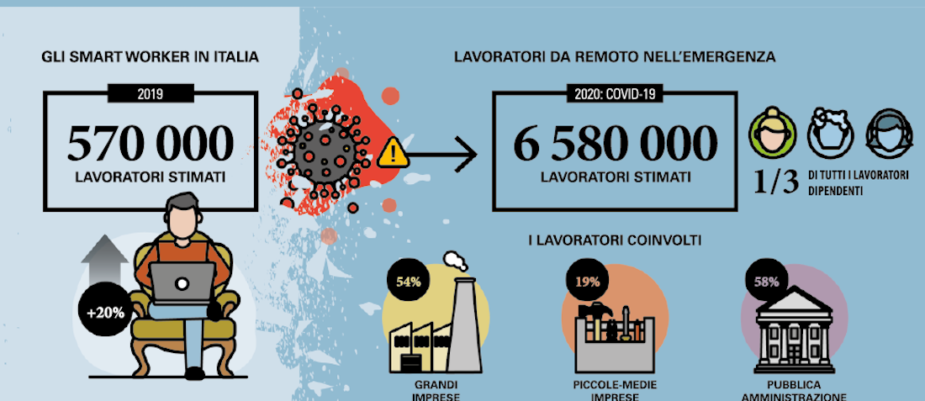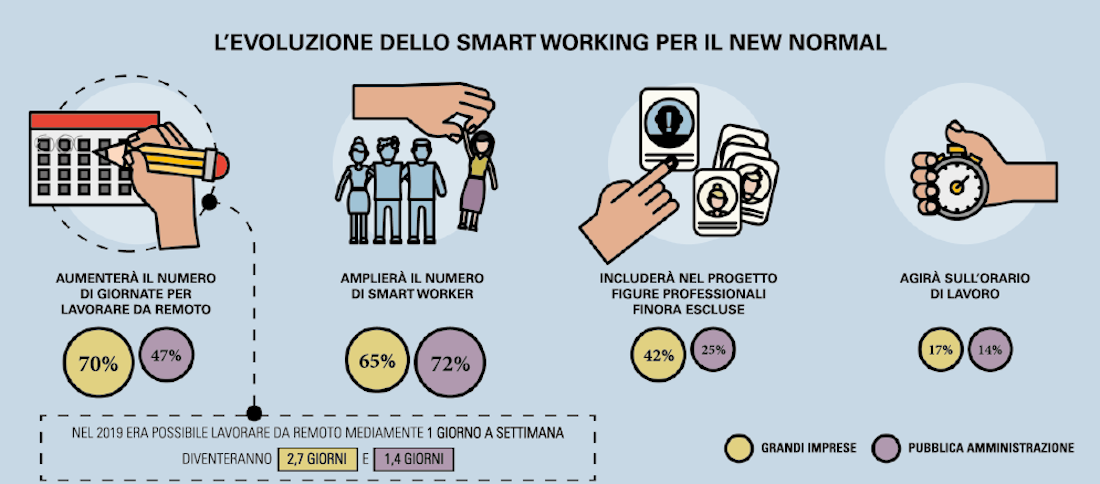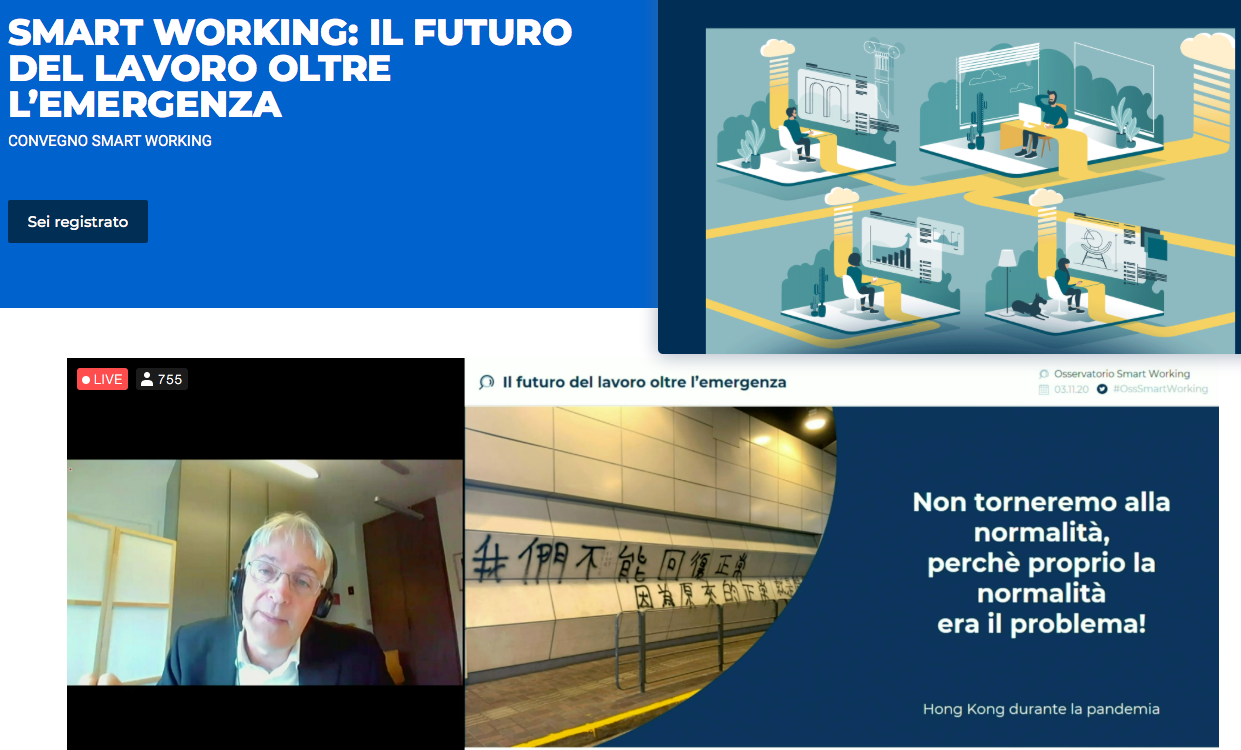
According to the 2020 research by Osservatorio Smart Working (#OSW20) of Politecnico di Milano, during the most dramatic phase of the pandemic, over 6 million 580 thousand workers (+ 1054%) had to improvise themselves smart workers, despite it was mainly “remote working”.
Although the technological, management, cyber security and work-life balance problems, the system surprisingly held up – above all thanks to the employees’ sense of responsibility and improvisation skills.
The first back to work phase, last September, registered over 5 million agile workers, again increasing because of the fall covid-19 phase and the new restrictions. Many prejudices have fallen, we know the way of working has changed and even in the “new normal” it will not be able to return to how it was in the past.
In the near future one third of employees will continue to work in smart working: a total of 5 million and 350 thousand.
Along with the cultural change that we have been hoping for for years, it is now necessary to analyze processes and organizational models, improve digital skills and offer the appropriate tools.
And workplaces must also be rethought becoming a functional meeting places, increasingly fluid and capable of creating identity value.
“After being able to float, now we have to swim.”
“Now we need a work rethink in order not to waste the experience of the last months and to move on to real Smart Working, which must provide for greater flexibility and autonomy in the choice of working time and space, fundamental elements to push greater responsibility for results. We need to focus on people needs,talents and singularities, structuring training, involvement and welfare plans”. says Mariano Corso, Scientific Director of Osservatorio Smart Working.
“During the emergency we had the opportunity to experience agile working on a large scale, albeit in an atypical form. The risk, however, is to treat it as a temporary obligation: it is instead a historic opportunity towards a “New Normal”, with benefits on the entire ecosystem of services, cities and territories”. Fiorella Crespi, Director of Osservatorio Smart Working quoted.
What will the workplace be like after the emergency?
Fiorella Crespi lists the main approaches implemented – with differences between Public (PA) and Large Enterprises – for the gradual return: guidelines for regulating access to the office, reservations, signage for safe behavior, barriers and protective screens and in some cases even layout changes. There was a strong impact on the workspace becoming more and more fluid and hybrid.
“A virus has blown the foundations of the historical equilibrium of Taylorism” as stated Francesco Caio, president of Saipem.
The meaning of existing office today depends on the quality of the projects, the ability to motivate people and create the identity value of the company. The simple coexistence of people is no longer the central meaning of the office which assumes the role of a functional meeting place.
Among large companies, 51% plan to rethink their headquarters.
The new workplace projects are aimed at improving quality (29%), expansion (12%), reduction (10%). Instead, 38% simply applied new rules for the use of existing spaces, while 11% will not apply any changes to the environments.





















